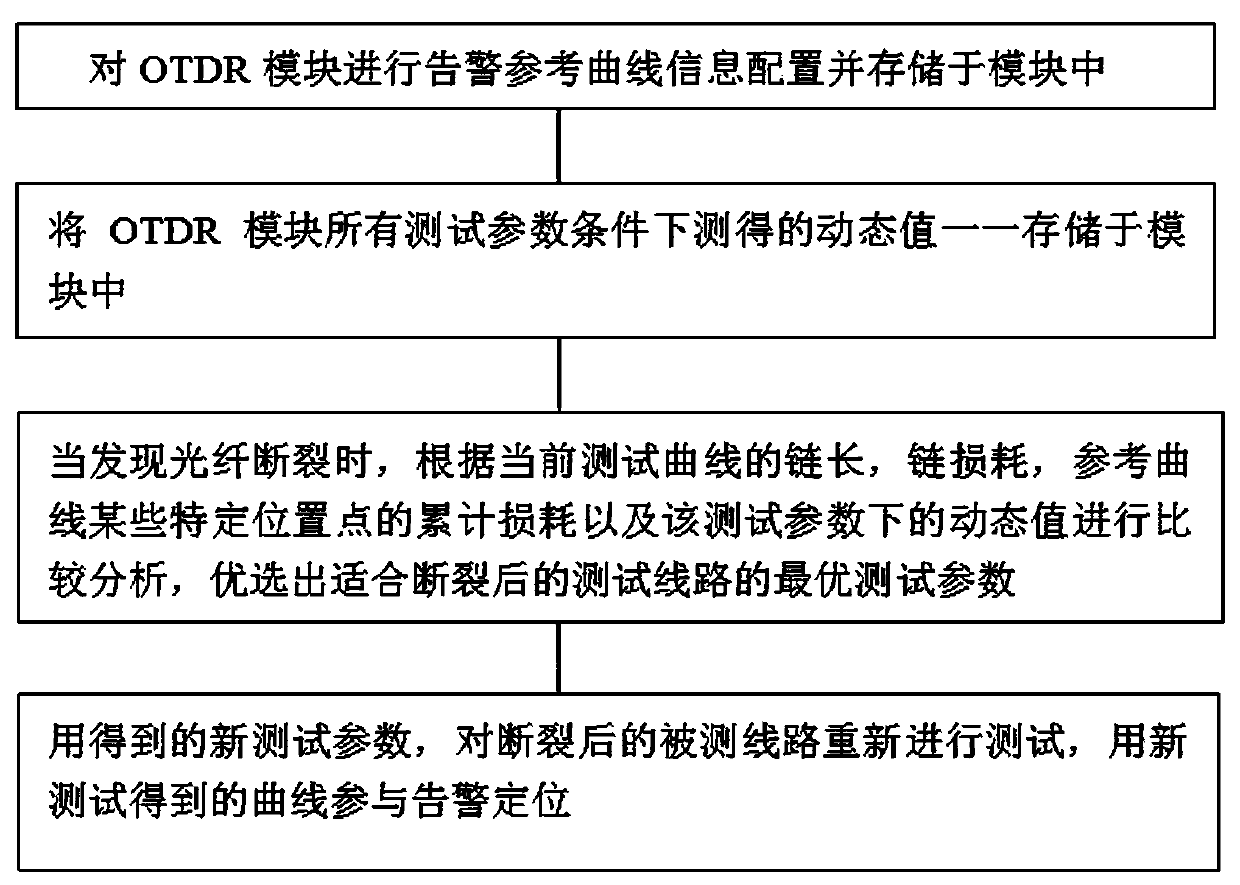Adaptive pulse width detection method of OTDR module for optical cable monitoring
An adaptive, pulse width technology, applied in the field of optical communication, can solve problems such as smearing, large blind spots, and wrong analysis results
- Summary
- Abstract
- Description
- Claims
- Application Information
AI Technical Summary
Problems solved by technology
Method used
Image
Examples
Embodiment
[0018] refer to figure 1 , a method for OTDR module self-adaptive pulse width detection in optical cable monitoring, comprising the steps:
[0019] 1) Configure the alarm reference test line information for the OTDR module and store it in the OTDR module;
[0020] 2) Store the corresponding dynamic values measured in advance under all test parameters of the OTDR module in the OTDR module;
[0021] 3) When the fiber is found to be broken, the optical power alarm triggers the OTDR to use the original test parameters to initiate the first test of the fiber to be tested. When the actual chain length can be obtained, if the actual chain length is less than the chain length of the reference test line, the fiber is broken. , if the blind area of the original test parameters is too large and the actual chain length cannot be obtained, check the loss value at the end of the fiber to be tested. If it is lower than the noise level, the fiber is broken. According to the chain length ...
PUM
 Login to View More
Login to View More Abstract
Description
Claims
Application Information
 Login to View More
Login to View More - R&D Engineer
- R&D Manager
- IP Professional
- Industry Leading Data Capabilities
- Powerful AI technology
- Patent DNA Extraction
Browse by: Latest US Patents, China's latest patents, Technical Efficacy Thesaurus, Application Domain, Technology Topic, Popular Technical Reports.
© 2024 PatSnap. All rights reserved.Legal|Privacy policy|Modern Slavery Act Transparency Statement|Sitemap|About US| Contact US: help@patsnap.com








